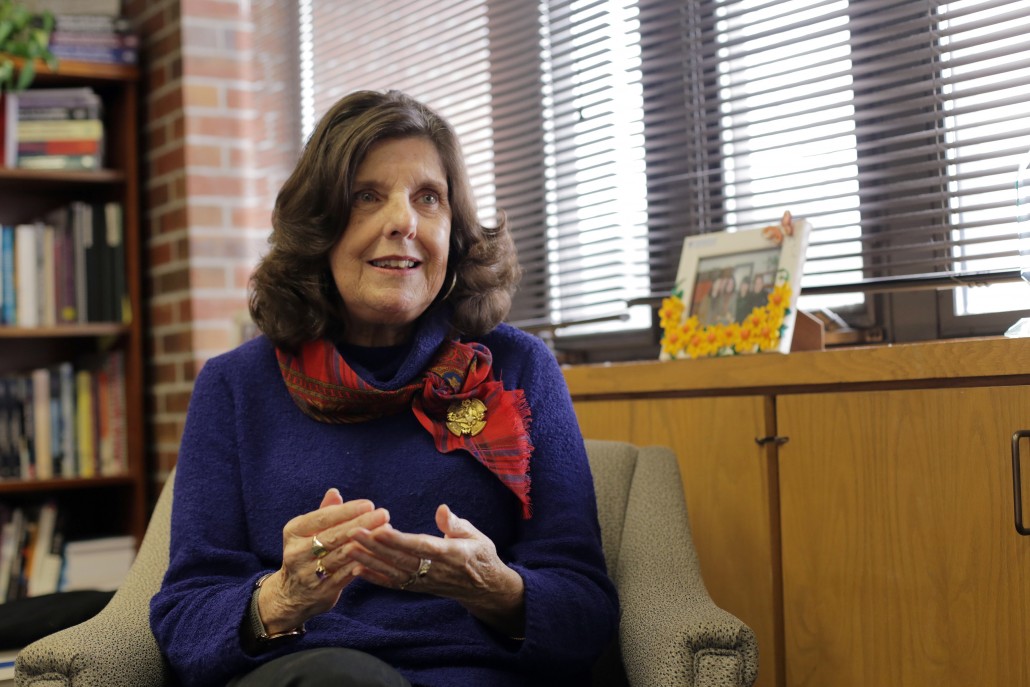
It’s hard to imagine an American education system that did not include children with disabilities, but 40 years ago, that was very well true. When Congress passed the Education for Handicapped Children Act in 1975 (which was later reauthorized to the Individuals with Disabilities Education Act in 1990), we opened up the classroom doors for those children who were shut out of education, despite fears of undue harm to regular students and high cost.
For Dr. Jean Crockett, a Professor and Director in the School of Special Education, School Psychology, and Early Childhood Studies, the IDEA did more than increase access to education for kids with disabilities by expanding the eligibility age for school entry to birth till 21. “I think the idea of what it means to have a disability is becoming a little more acceptable,” she said. “And we’re beginning to realize that disabilities fall into a broad spectrum from mild to severe, that some disabilities do not mean you’re cognitively incapable, and some might but that that’s ok, what do we do about it? How do we adjust?”
“I think the idea of what it means to have a disability is becoming a little more acceptable.” –Dr. Jean Crockett
Crockett, whose has spent many years working in special education leadership roles, notes the unexpected accomplishments the law has made on education, particularly in students without disabilities. “It doesn’t shake their ability to learn and in some cases, they’re finding it an enhancement because they provide in-class peer tutoring,” she said. “They kind of feel like they have something to add to this.”
Undergraduate programs and courses in special education, such as the Disabilities in Society minor at UF, have become so popular among students that the department has had to open up to five new sections with 40 enrolled students per section per semester. A graduate certificate in Disabilities in Society is also in the works. “What we’re finding is that college students are drawn to this because they’re expecting that they’re going to live in neighborhoods with neighbors who are going to have disabilities or whose children will have disabilities,” Crockett explains. “They’re going to work in business where they’re going to have employees with disabilities, so the disability minor is set up to help people learn how to deal with this.”
“What we’re finding is that college students are drawn to [the Disabilities in Society Minor] because they’re expecting that they’re going to live in neighborhoods with neighbors who are going to have disabilities or whose children will have disabilities.” – Dr. Crockett

Crockett says that this expectation from students stems from attending classes in grade school with special needs kids. Even with all of the achievements the IDEA has won for special education, Crockett says that individualized instruction in the classroom for kids with disabilities and preparation plans for adult life remain unresolved but salient issues. “Where a lot of work needs to be done in the field of disabilities is after age 21,” she said. “Things tend to fall apart for kids with disabilities after they move through k-12 or up to age 21.”
Crockett, who has a background in music education, is currently working on a project that integrates art education into special education to create a more dynamic and stimulating learning environment for kids with disabilities. She says that it will enable students with disabilities to “grow artistic skills, express in any way they can, have instruction delivered in a way where you bring in the arts.” The ongoing challenges that kids with disabilities face will require the same boldness that Crockett has shown throughout her career and that led to the signing of the IDEA in the first place. Let’s not lose this one force that made progress in special education possible.




